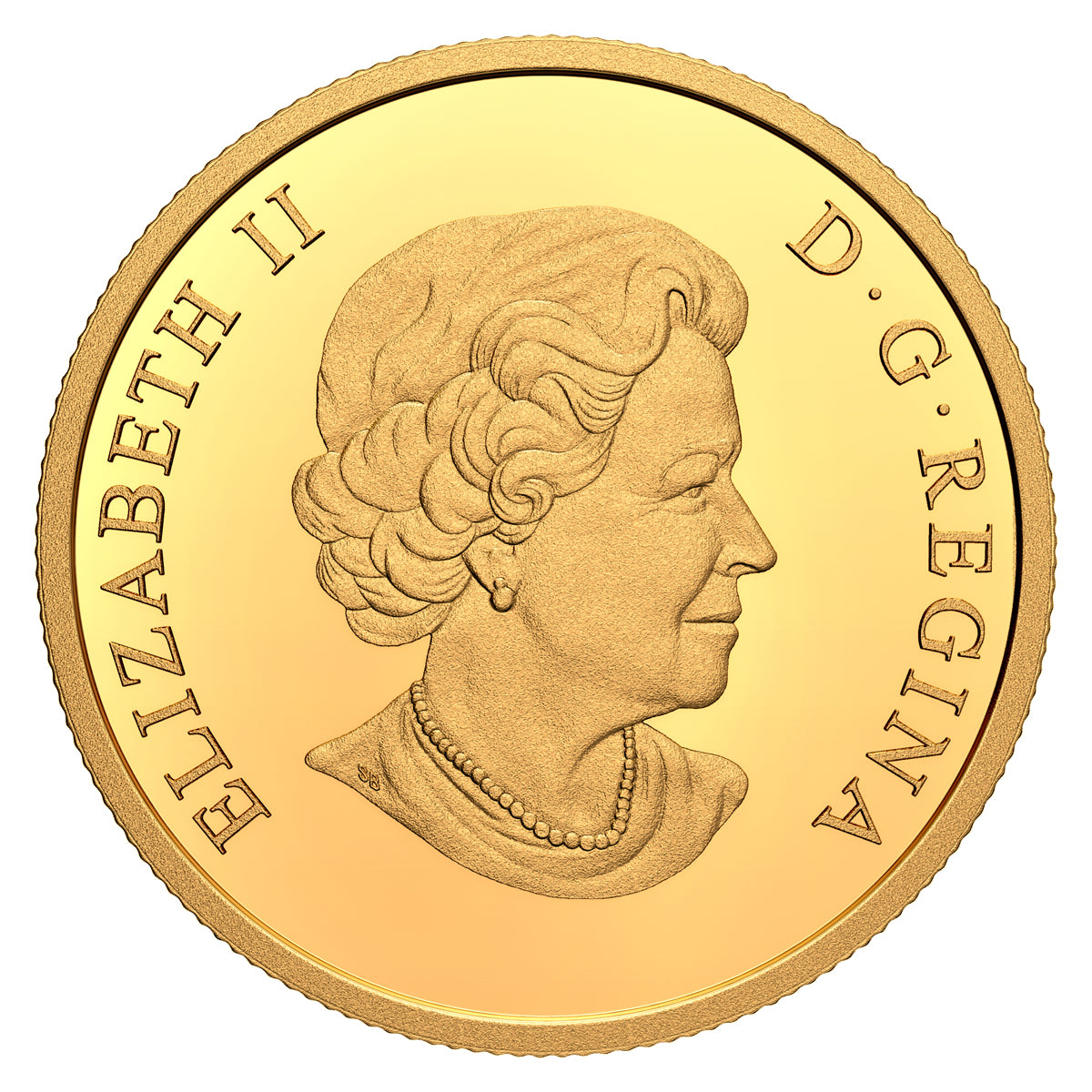Description
The Design:
Artist Sheila Orr has created a captivating visual narrative of a Nishiiyuu family departing from their camp, their canoe loaded with supplies for the trip and bundles of furs destined for the trading post. It is springtime in the mid 1700s; the adults are wearing new caribou hide clothing and their child is dressed in a rabbit fur coat. On land, the fish are drying, the food is cached and beaver skulls are hung from a tree as a traditional show of respect. In the sky, the return of migrating geese heralds a new season: summer, a time for gatherings and celebrations. The obverse features the effigy of Her Majesty Queen Elizabeth II by Susanna Blunt.
The Fur Trade:
In the fur-rich region of James Bay, the Nishiiyuu (Cree) people of Eeyou Istchee (“The People’s Land”) were the skilled hunters, trappers and middlemen who supplied the coveted pelts that were brought to trading posts such as Fort Charles, where they were exchanged for imported goods – metal tools, kettles, cloth and more.
Initially, Nishiiyuu and European traders mutually benefitted from this exchange of goods, but as time went on, it proved to be an agent of change. The Nishiiyuu way of subsistence living gradually gave way to a reliance on trade, which was increasingly competitive and led to escalating social problems. Seasonal movement was impeded by the necessity of travelling to the posts. And within the hunting groups that formed the basic unit of society, a new kind of leader emerged – one based on trading and communication skills rather than knowledge of the land. The fur trade shaped this country’s history but it also impacted the traditional ways of the Nishiiyuu, who were important partners and contributors to one of Canada’s earliest industries.





